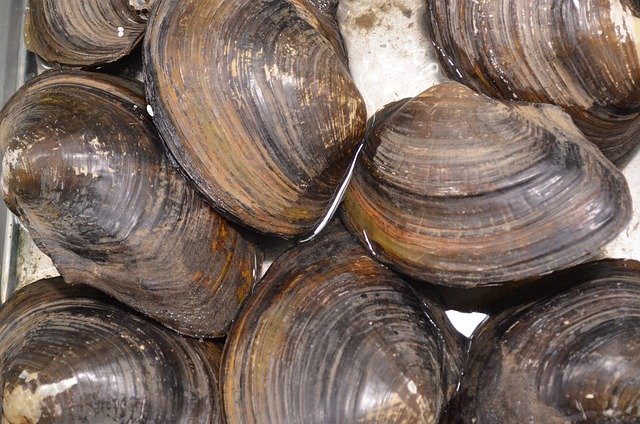
Clams are considered to be quite the wonder of seafood. They can be basically bought from local wet markets or supermarkets.
Clams are truly versatile in the kitchen scene– they can be steamed, baked, grilled, deep fried, and pan fried.
But can you freeze clams? You can freeze uncooked clams either in the shell or out of the shell. In fact, shellfish such as clams are easily perishable therefore making basic handling and storing is a must by keeping it cleaned well, storing it quickly, putting it in a cold place. Doing so will ensure the longevity of the clams’ freshness.
Usually, fresh clams are best stored in the coldest area of the refrigerator when freezing. You can make use of a thermometer to check for your refrigerator’s actual freezing capacity.
It should be lower than or at least equal to 40° F for the reason that seafood tends to get bad easily with warm storage temperature.
How to Store Clams Properly?
First things first: you must inspect to check if the clams are alive. It is not ideal to cook dead clams as their bodies will emit toxins.
To know if the clams are alive, first, separate the ones with broken or damaged shells. This should be done because clamshells are naturally slightly open and that clams shut their shells close quickly once they sense tapping on their shell.
On the other hand, you should not bother with clams whose shells are closed already even without tapping anymore because they are good as dead, and must be disposed.
After ensuring that the clams are indeed alive, it is important to keep them that way– alive. Refrain from storing the clams in plastic because it will only suffocate them.
Instead, it is better to store them in either mesh or steel colander sets in the coldest part of your refrigerator to freeze.
How to Freeze Uncooked Clams?
As we have mentioned earlier, uncooked clams can be frozen in two ways: in the shell or out of the shell. Just note the difference that freezing uncooked clams out of their shell will result in a softer texture. Either way is fine.
Freezing Uncooked Clams 101: The Beginner’s Guide
Freezing uncooked clams is fine, but freezing cooked ones is a different story. It is simply not recommended. It is not advised to freeze cooked clams because their meat texture will be ruined once you freeze them.
Freezing cooked clam meat would result in being soft or rubbery in texture. However, if it is inevitable that you get clam leftovers, you can still save them by storing them in the fridge but only for about 2 to 3 days.
Can I Leave My Clams in the Freezer Overnight?
One of the common queries people ask me is if they can freeze their clams overnight or not.
My personal take on this is yes, you can leave your clams in the freezer overnight.
However, it is important that you ensure your clams are stored properly. If there is one thing about clams, it is that they are not difficult to cook– they just require to be well-stored.
How Long Can I Keep Clams in the Freezer?
You can freeze your clams, but not forever (this is not cryogenics). Clams can only be stored in the freezer for only two to three days maximum. They are best consumed within the said time period.
How to Clean Clams?
It is true that most clams are mass-grown and commercially farmed. Hence it is just fine to expect that they are clean upon buying them. Be that as it may, you can still decide to give their outside shells further cleaning and that is fine as well.
You can simply scrub the clamshell thoroughly. You can also dislodge any clam beards by pinching them and pulling them away.
Fun Fact:
Did you know that clams that have darker shells are way easier to clean? On the contrary, clams that have lighter shells are actually more difficult to clean.
Tips on Proper Clam Handling and Preparation
Just like other foods, clams must also be handled and prepared in a clean kitchen area so that you can prevent cross-contamination. With all things considered, it is therefore essential to keep your hands, kitchen area, and utensils clean.
Moreover, raw seafood should not come in contact with already cooked food. Additionally, when thawing frozen clams from the fridge, it is important to make sure that any fluids from the clams should not drip into cooked food or raw food.
Aside from that, it is also important to note that you should not serve already cooked clams on a plate that just recently held the raw clams without having the said plate washed and cleaned first.
In the event that you get leftover clams, it is advised that you properly wrap your clams properly prior to storing them in the refrigerator. The breeding ground of bacteria are in temperatures between 40° F to 140° F, so hot clam dishes should be kept at temperatures above 140° F while cold clam dishes should be kept at temperatures below 40° F.
Safe Clam Consumption tips
Clams, or seafood in general, are best cooked thoroughly first before being eaten so that the risks of contracting foodborne diseases are minimized. However, healthy adults may still opt to consume raw or half-cooked seafood. But it is not good for children, pregnant and nursing women, immunocompromised individuals, and senior citizens.
Eating raw clams can be tasty, but you must at least be aware of a few things. Raw clams are prone to bacteria such as vibrio vulnificus, which is typically found in raw seafood like clams and oysters.
Cooking the clams properly are enough to eliminate the bacteria.
Proper Clam Cooking Techniques
Foodborne diseases are the ones we get from ingesting contaminated food or drinks. For you to prevent catching these, it is critical that you cook your clams under the internal temperature of 145° F for up to 15 seconds until the clam flesh turns opaque and flaky inside.
It is also recommended that you make use of a food-grade thermometer so that you can check the internal temperature of the clams. You can do so by placing the thermometer in the thickest part of the clam.
This is to ensure that your clam dishes are properly cooked, but not to the extent of overcooking them. One of the key indicators that clams are already well-cooked is that when they turn to be plump and opaque-looking, plus their shells will also actually open.
I hope that this information serves you well. Happy cooking!

